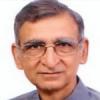Banning of books, opposing cricket team and singers from Pakistan is not very new in India. We had seen the banning of Satanic Verses, digging of cricket pitch in Wankhede stadium in Mumbai to oppose the Indo-Pak match, the disruption of the gazal program of Ghulam Ali in Mumbai amongst many others. The intensity of this intolerance has grown by leaps and bounds in the recent times. The music program which has been targeted this time is that of S M Krishna, the renowned Carnatic musician. His program was organized jointly by Airports Authority of India and SPIC MACAY. The organizers got the threatening messages as to how come they are organizing a program of an anti India person, an Urban Naxal, and a bigot who sang about Jesus and Allah!
As it was postponed by AAI, Krishna showed his availability for the program on that date, which Delhi’s ruling AAP party picked up to host. Program was well attended not only by music lovers but also by those who are opposed to the politics, which is trampling the liberal democratic ethos of the country. The attack on the Krishna concert, in a way, is the continuation of the politics which we have seen in the recent past. These attacks came in the form of ‘Award Wapasi’ (returning) which was the first major resistance to the intolerant acts which had led to the murders of Dr. Dabholkar, Com. Govind Pansare, M M Kalburgi and Gauri Lankesh. Around this time beef lynching took its first victim in the form of Mohammad Akhlaq and that’s when Uday Prakash and then Nayantara Sahgal returned their well earned honors to be followed by nearly fifty other literary figures, film personalities and scientists.
During this period we also saw the attack on the dalit aspirations leading to the institutional murder of Rohith Vemula. On parallel level the attack on JNU was orchestrated. At JNU the masked men who shouted the slogans have not been caught while Kanhaiya Kumar and company was targeted. The word anti national was thrown up. The aim was very clear, it was to create and enemy image of those who are critical of this Government. Same way all those disagreeing with the ruling dispensation are being called as anti National and BJP’s well oiled troll army is the new form of aggressive foot soldiers adding on to the Bajrang Dal types.
Krishna is an outstanding musician who has not only been contributing to the Carnatic music but has also voicing his opinion against the politics of sectarian nationalism and growing intolerance. In the true traditions of music he sings Gandhi’s favorite Bhajan (Vaishnav Jan to), sings about Jesus and Mohammad. As such music is essentially based on the prevalent cultures, which are not bound by any narrow boundaries. It is only from last few decades that creative artists are being questioned and targeted on the ground of religion. Whole of Indian culture has been an intermixing of traditions coming from different religions. The peak point of this has been seen in our medieval times in particular, when Hindus and Muslims both contributed. While the peak of this syncretism is expressed in Bhakti and Sufi traditions, our food habits, literature, art and architecture have all evolved through these interactions.
Jawaharlal Nehru’s ‘Discovery of India’ underlines this aspect of our culture. As per him there are layers of culture intermixing and influencing each other. When cultures meet they interact and evolve into better forms. They have their own distinct signature even while changing themselves and that’s what is called, ‘salad bowl’. Some do believe in ‘melting pot’ model where the original distinctions get merged into a uniform whole. India is fairly unique in having these different components of ‘Salad bowl’ contributing to the richness of the land. While bhakti saints have an appeal cutting across religious boundaries, those visiting Sufi saint shrines are not just Muslims. In the field of literature the devotional songs of Rahim and Raskhan dedicated to Lord Shrikrishna are amazing. The Hindi film and television world is a living testimony to this interactive culture.
One cannot forget the brilliant Bhajans (devotional songs) sung by Mohammad Rafi, Man Tarpat Hari Darshna ko aaj (Baiju Bawara) or ‘Insaf ka mandir hai ye (Amar). There is a long list of these inter religious cultural expressions. The contributions of Ustad Bismillah Khan, Ustad Bade Ghulam Ali Khan match those of Ravi Shanker and Shiv Kumar Sharma to give just one example. In current times music maestro A R Rahman, on one side is composing ‘Piya Haji Ali’ and on the other is composing ‘Shantakaram Bhujanagshayanam’.
If Krishna is singing about Jesus and Mohammad, that is just so much natural and inspiring. This precisely is the core essence of creative artists. The bigots cannot see beyond their narrow prisms and cannot tolerate the natural interaction in the positive light. This is what the Taliban do, and this is what the Christian fundamentalists assert.
Taking a cue from the trolls succeeding in postponing AAI SPICMAY concert, other trolls are also showing their aggressive teeth. After the cancellation disguised as postponement another organizers planning to host the program in Mysuru Kuvempunagar have pulled out on similar grounds as they got a warning that hosting Krishna will be like denigrating Hindu Dharma! One admires Krishna who in the face of these aggressive reactions is holding his ground and believes that music does not know borders of nation, region, religion or language. As per him music should soar across the world and captivate all humanity. Says he; “The troll army has the underlying patronage of people in power. I have been trolled for a long time for my social position, my perspectives on politics, and my disagreements with the BJP regime. I believe in every art form. Allah, Jesus and Ram make no difference. It is a multilingual and multi-religious country.” Salute to the brave soul, brave Indian!






Comments
Add new comment